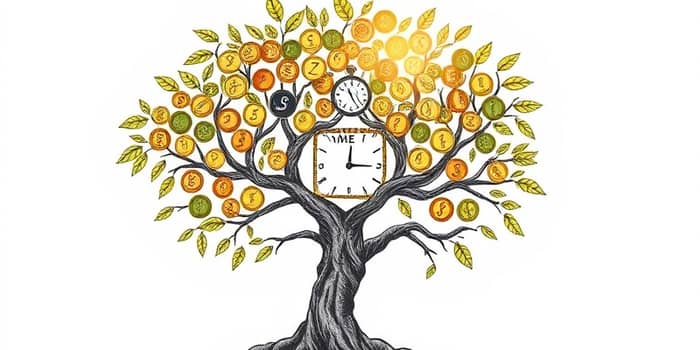
In a world where financial goals often feel out of reach, understanding how to harness the power of time and interest can transform your savings journey. Certificates of deposit (CDs) offer guaranteed fixed interest rate solutions that blend security and predictability. This article guides you through every aspect of CDs, empowers you with practical strategies, and inspires you to build a reliably growing nest egg.
At their core, CDs are deposit accounts that require you to lock in a set amount of money for a predetermined term. In return, you earn a fixed interest rate until the maturity date. Because the rate is locked in, your earnings are shielded from market fluctuations, making CDs a cornerstone of risk-averse saving strategies.
When you open a CD, you agree to three essential terms: the principal amount, the term length, and the interest rate (APY). During the lock-in period, withdrawing funds typically incurs an early withdrawal penalty. However, at maturity, you receive your initial deposit plus all accrued interest. CDs are federally insured up to $250,000 per depositor, per institution, offering peace of mind for your savings.
Not all CDs are created equal. Various options exist to match your financial timeline and preferences.
Certificates of deposit are ideal when you have specific savings goals tied to a future date—such as a down payment on a home, tuition payments, or a planned vacation. Their fixed, predictable returns make budgeting easier, eliminating concerns about fluctuating rates or market volatility.
Unlike savings accounts or money market accounts, which offer variable rates, CDs deliver a guaranteed yield for the entire term. This stability and clarity can help you forecast your financial progress with confidence, avoiding unpleasant surprises during critical spending moments.
To decide whether a CD fits into your financial plan, it helps to compare it with other common savings vehicles. The table below highlights key differences:
A CD ladder is a powerful way to enjoy higher rates while maintaining periodic access to funds. By spreading your investment across CDs with staggered maturities—6 months, 1 year, 2 years, and beyond—you create a rolling series of maturity dates.
As each CD matures, you can reinvest in a new long-term CD at current rates or use the funds for your goals. This strategic CD ladder strategy balances liquidity needs with the desire for higher yields.
For example, if you invest $10,000 equally in five CDs with terms of 6 months, 1 year, 2 years, 3 years, and 5 years, you will have one CD maturing every six months. This approach reduces the risk of locking all your money into a single rate environment and smooths out rate fluctuations.
Shopping for the best CD rates and terms requires attention to detail:
At maturity, decide whether to funnel the funds into a new CD, a different savings vehicle, or to deploy cash toward your financial goals. Maintaining a clear action plan helps ensure you capitalize on the best rates and stay aligned with your objectives.
Certificates of deposit are especially well-suited for savers who value steady, predictable growth. Ideal candidates include:
If you need immediate liquidity or anticipate unpredictable expenses, consider pairing CDs with a high-yield savings or money market account.
Certificates of deposit offer a compelling blend of safety, stability, and predictable savings growth. By understanding how CDs work, exploring different types, and implementing strategies like laddering, you can align your savings plan with the clock of your financial goals. Embrace the discipline of time-based saving to watch your hard-earned money flourish, providing a sturdy foundation for the milestones you dream of reaching.
References













